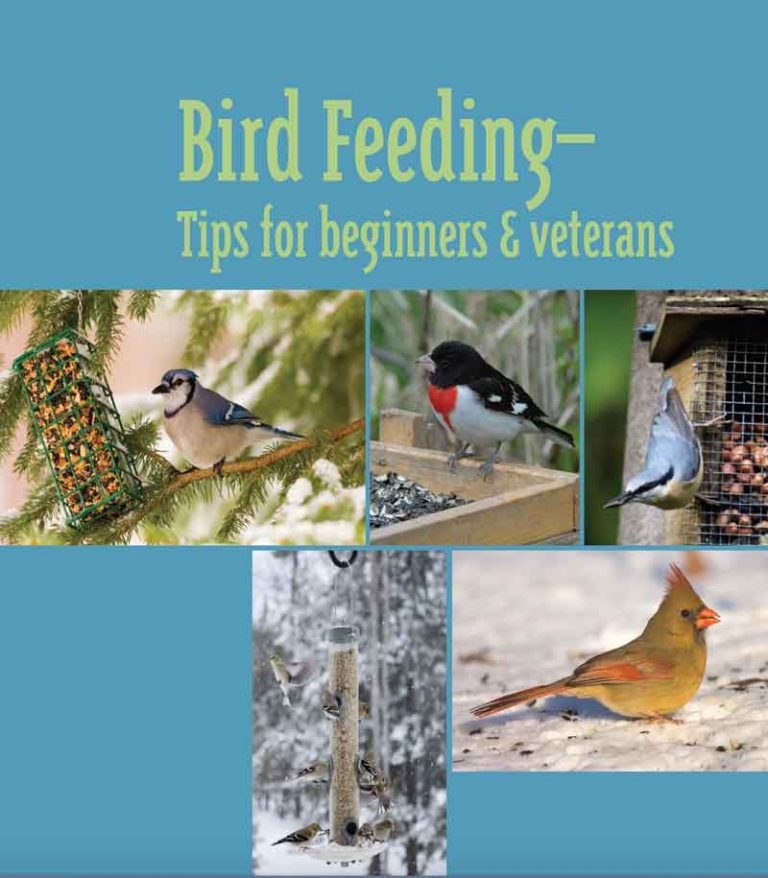Once a novelty of the season, the solitude of winter may feel especially unwelcome this year. Months of social distancing and cancelled plans have made “hunkering down” lose its cozy shine. Are you craving connection and energy but unable to gather with other humans? Consider inviting the birds.
“Birds provide us with a connection to nature,” says Jamie Nack, Extension wildlife outreach specialist and co-author of Bird Feeding: Tips for Beginners and Veterans. In the winter months when other animals make themselves scarce, bird feeding is an easy way to interact with and enjoy wildlife. Best of all, you can do it from the comforts of a warm home.
And while birds are well adapted to finding food in the wild, Nack notes that feeding can be helpful at specific times of the year, such as during migration or periods of temperature extremes. Just be mindful that feeding the birds also means cleaning up after the birds and doing so consistently to prevent the transmission of disease.
Ready to make some new feathered friends? Follow these five tips to safely and successfully attract birds to your feeder this winter.

1. Food comes first.
The type of food you provide will determine the type of birds you attract. Cheaper birdseed mixes often contain undesirable fillers, such as milo or hulled oats, that birds will pick through. Nack recommends avoiding seed mixtures entirely. Instead, consider black-oil sunflower, which is high in fat. “It provides a good source of energy and the seeds are thinly shelled making it easier for small birds to crack open.”
2. Feeders matter, but they don’t need to be fancy.
Some types of food, like thistle seed or suet, will require a special feeder, but for new bird enthusiasts, Nack suggests a hopper or house-style feeder. It’s important that the feeder keeps seeds dry. “Select or build feeders that have a roof to protect the seed from getting wet and/or that have drainage holes to allow water to drain out. This helps to prevent the seed from getting moldy or gummed up on the bottom of the feeder.” Nack also recommends using multiple feeders of different styles to reduce competition between birds and attract a greater variety.
3. Location, location, location.
Hang feeders 5 to 6 feet above the ground near cover, such as trees, shrubs, and brush piles, to protect birds from predators. Don’t place them too close to cover, though—aim for 10 feet— as predators like cats can shelter there, too. Worried about birds crashing into your windows? Place feeders within 3 feet or greater than 30 feet of a window to help prevent collisions.
4. Be consistent.
Nack notes it’s important to feed birds consistently throughout winter. “Birds can become accustomed to relying on the food in your feeders for at least a portion of their diet. If you make the decision to feed birds this winter, it’s important to continue through late winter, early spring.”
5. Keep it clean.
Dirty feeders and high concentrations of birds can spread disease. (We don’t need more disease!) Nack says to clean feeders with a 10% non-chlorinated bleach solution when you notice an accumulation of moldy, wet seeds and droppings.
Even with a clean feeder stocked full of seeds, be patient—it may take time for birds to find your feeder. Once they do, Nack recommends getting a field guide for birds of eastern North America, such as those published by Sibley or Peterson, to help you identify what’s visiting your feeder. There is also a plethora of resources online, such as the Cornell Lab of Ornithology’s All About Birds website, and apps you can download on your smartphone, like iBird Pro Birds of North America and Merlin Bird ID.
You may find yourself unexpectedly enamored with your new avian visitors. And we could all use a little help getting through this winter.
Interested in learning more? Check out Bird Feeding: Tips for Beginners and Veterans at the Extension Learning Store.




